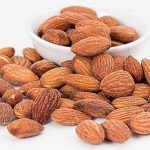Knowing how many carbohydrates you are eating is vital on a low-carb diet. One way to do this is to count grams of carbohydrate, a practice commonly called “carb counting.” Carb counting is often practiced by people who are managing a medical condition such as type 1 or type 2 diabetes. But many other people use carb counting to lose weight, maintain a healthy weight, or reach health and wellness goals.
Carbohydrates are the macronutrient that affects blood sugar the most. Because people with diabetes have difficulty managing their blood sugars, they often benefit from eating a modified carbohydrate diet. For those people with diabetes who take insulin, adequate carbohydrate counting is a critical skill because carbohydrates are matched to insulin to control blood glucose levels.
Carbohydrate counting may seem overwhelming when you first because, but the process will get easier and faster once you get the hang of it. Take advantage of online tools and resources to make the process more efficient. Diabetes is a chronic health condition that occurs when too much sugar, or glucose, is in the blood.
Fortunately, with proper treatment and dietary changes, adverse health outcomes can be prevented. One diabetes meal planning technique that is used to manage blood glucose is carb counting, which is slightly different from calorie counting. Carb counting involves keeping track of the carbs in your snacks, meals, and beverages to manage blood sugar levels.
The Benefits of Carb Counting
The carbohydrates in foods we eat break down into glucose, which causes your blood sugar to rise. Normally, when blood glucose goes up, the pancreas releases insulin. Insulin is a hormone made in the pancreas that enables blood glucose in the body’s cells to be used for energy.
For people with diabetes, the body is unable to use insulin properly or produce enough insulin. This leads to high glucose levels circulating in the blood.
Why Should I Count Carbs?
Carb counting is a flexible way to eat the foods you enjoy while maintaining a low-carb diet. It also helps you learn how certain foods affect your blood sugar so you can match the foods you eat to your insulin dose.
Types of Carbohydrates
The three types of carbohydrates found in food are:
- Sugars
- Starches
- Fiber
Sugar is a type of simple carbohydrate, meaning the body breaks it down quickly. This can cause blood glucose levels to rise and fall at very fast rates. Sugar is naturally found in fruits and milk. It’s also frequently added to packaged foods like candy and sodas.
Starches are found naturally in many foods that we eat. This includes bread, pasta, rice, and certain vegetables, like potatoes and corn. Aim for consuming whole, minimally processed starches. Whole grains provide fiber and other vitamins and minerals essential for good health. Try to get at least half of your daily starch intake from whole grains such as brown rice, oats, and quinoa.
Fiber is a plant-based nutrient that the body can’t digest. It helps you feel full and slows digestion. Foods high in fiber can reduce your risk of heart disease and help to manage blood sugar. Good sources of fiber include whole grains, nuts, seeds, and beans.
Gather Tools to Measure Food
It may sound obvious, but you can’t determine the amount of carbohydrate in a portion of food unless you know how much of the food you are going to consume. Measuring tools are essential for this vital step, especially when you first start out.
It is very common for people to think they know about how much a tablespoon or half a cup or six inches is, but often their estimates are inaccurate. Handy tools include measuring cups and spoons and a kitchen scale (digital scales are easiest to use).
Learn to Estimate
You won’t always have access to your measuring tools when you eat, so you should learn as much as you can about foods that contain carbs and the amount of carbohydrate that they provide.
The Academy of Nutrition and Dietetics provides a list of foods that provide about 15 grams of carbohydrate. They include:
- Bread: One slice
- Cereal: 3/4 cup of dry or 1/2 cup cooked
- Fruit: 1/2 cup of canned or juice, one small piece of fresh (such as a small apple or orange)
- Jelly: 1 tablespoon
- Pasta: 1/3 cup
- Pinto beans: 1/2 cup
- Rice: 1/3 cup
- Starchy vegetables: 1/2 cup of mashed potatoes, cooked corn, peas, or lima beans
- Tortilla: One 6-inch
Learn about foods that provide zero carbs. Balancing carbohydrate foods with carbohydrate-free foods will help you to plan meals and stay within your target zones.
Non-starchy vegetables are part of a well-balanced meal plan and contain very little carbohydrate, about 5 grams is 1/2 cup cooked or 1 cup raw. An easy way to portion control your meals, while also getting adequate nutrition, is to practice the plate method.
Read Food Labels
When you are counting carbs, food labels are your friends. The Nutrition Facts label clearly states how much carbohydrate is in each food. To make sure you use the label properly, check not only the grams of carbohydrate provided but also the serving size. The amount of food you consume may be more or less than the serving size listed and this will affect the number of carbs you consume.
For example, if you consume two slices of bread and the serving size listed is one slice, you’ll have to double the number of grams listed in order to know how many total carbs you are consuming.
Use Online Resources
There will be some foods that do not contain a Nutrition Facts label such as fresh fruits and vegetables and meat from the butcher. For these foods, you’ll have to use other resources to get data about carbohydrate content. Online resources are generally the easiest to use and are updated more often.
One smart resource is the USDA Food Composition Database. This searchable database provides nutrition facts, including grams of carbohydrate, fiber, starch, and sugars in foods sold throughout the country. You’ll find specific brands of food products as well as general categories.
You can also use the tool to search for nutrients. For example, using the “Nutrient Search” function, you can search for breakfast cereals listed by the number of carbs in each.
In addition to the database, the USDA also provides consumers with Carbohydrate Counting and Exchange Lists. You may find a tool there that works better for you or consider using a smartphone app as many are widely available and most are free.
Apps or online resources such as the USDA Food Composition Database are helpful tools when carb counting and might be more accurate than printed resources which are not updated as often.
Carb Counting by Food Group
Each different type of food presents different challenges and opportunities when counting carbs. Use these tips to include as many healthy foods as possible in your diet.
Non-Starchy Vegetables
Although non-starchy vegetables have some carbohydrate, they don’t have a lot, and these foods generally provide substantial nutritional benefits. Non Starchy vegetables include dark and leafy greens, broccoli, asparagus, mushrooms, cauliflower, and green beans.
On a low-carb diet, these vegetables take the place of starchy foods. In fact, many people on a low-carb diet will double or triple the amount of these vegetables at mealtime. People on moderate-carb diets sometimes don’t count them at all.
However if you are counting the carbohydrates in vegetables it can be tricky because of irregular shapes and different ways of cutting and cooking them.
Fruit
Fruits have a huge variation in the number of carbohydrates they contain. For example, a half-cup serving of raspberries contains about 7.5 grams of carb. But raisins contain 34 grams for a quarter cup. In general, berries have the lowest amount of carbohydrate per serving and high fiber content, while some tropical fruits and dried fruits have the most carbohydrate per serving.
Fruits tend to be even more irregularly-shaped than vegetables, so sometimes you might need to weigh them. Another issue is that the average size of many fruits has grown over the years.
On average 4–5 ounces of whole fruit, such as an apple, pear, orange, 2 kiwis, a 4-ounce slice of melon, or 4 ounces of pineapple contains 15 grams of carbohydrate. The U.S. Food and Drug Administration provides a helpful downloadable resource for counting carbs in fruit.
For example, a medium banana is about seven inches long. Many that you find at your market are larger. A medium apple is three inches across, which most people would think of as small.
Beans and Starchy Vegetables
If you have room in your carb allotment, beans, and starchier vegetables are an excellent choice because they tend to be very nutrient-dense compared to other higher-carb foods.
In addition, beans have a lot of slowly-digested carbohydrates and resistant starch. A half-cup of beans contains approximately 15 grams of carb, with the exception of soybeans.
Starchy vegetables vary in their carb content and some numbers might surprise you. For example, a half cup serving of mashed potatoes contains about 15 grams of carb per serving.
The serving size of starchy vegetables and size will also vary the carbohydrate count. For example, thick cut potato fries will have more carbohydrates per piece as opposed to thinner sliced ones. In general, one 3-ounce potato contains about 15 grams of carbohydrate.
Grains and Pasta
Diabetes Care and Education Specialists often use 15 grams of carbohydrate as a measure for reference. In this instance, 15 grams is often referred to as one carbohydrate choice.
This doesn’t mean that you can only eat 15 grams of carbohydrate at one serving but if you are using 15 grams as a reference and you are looking to eat 45 grams of carbohydrate in a meal, for example, then you can have three carbohydrate choices at one meal.
It is also important to understand dry measurements versus cooked measurements. For example, 2 ounces of dry pasta yields one cup cooked which equates to about 45 grams of carbohydrates. Whole grains provide better nutritional value than refined grains.
Dairy Foods
One cup of cow’s milk contains 11 to 12 grams of carbohydrate which comes from sugar (lactose). In almost every other form of dairy product, some of the lactose is removed either through fermentation (yogurt, cheese) or because cream is used more than milk.
However, yogurt with added ingredients (such as fruit or other sweeteners) the carb count goes up. In general, cheese is a low-carb food. One ounce of cheese usually has between a half a gram and one gram of carbohydrate, although processed cheeses can have more.
Nuts and Seeds
Nuts and seeds are ideal foods to include in a low-carb diet as they supply essential fats and dietary fiber. Most nuts and seeds are low in carbohydrates. A one-fourth cup serving of different varieties of nuts, like almonds, cashews, walnuts, pecans, macadamia nuts, and Brazil nuts contains approximately 3-10 grams of carbs. Cashews have the highest amount of protein (around 10 grams) compared to pumpkin seeds, which have only 3 grams.
Summary
Counting carbs is a proven method to promote glycemic control(managing your blood sugar levels). It involves setting a daily carbohydrate target in grams and dividing the number throughout the day,
For best results when carb counting, choose high-quality carbs and avoid processed foods. The goal is to choose more nutrient-dense carbohydrates that include vitamins, fiber, and minerals. Pair these with lean proteins, non-starchy vegetables, and healthy fats for a balanced diet.
If you have diabetes, carbohydrate counting is a great tool to learn portion control and keep your blood sugar in check. If you decide to start counting carbs, it’s important to give yourself grace throughout the process and avoid getting too caught up in the numbers.
If you’re newly diagnosed and haven’t received a personalized diet education, it’s best to speak with a registered dietitian or certified diabetes educator. If you’re unsure where to find a registered dietitian, have a conversation with your primary healthcare provider, who can refer you to one.
READ MORE: 24 Natural Home Remedies For Diabetes









